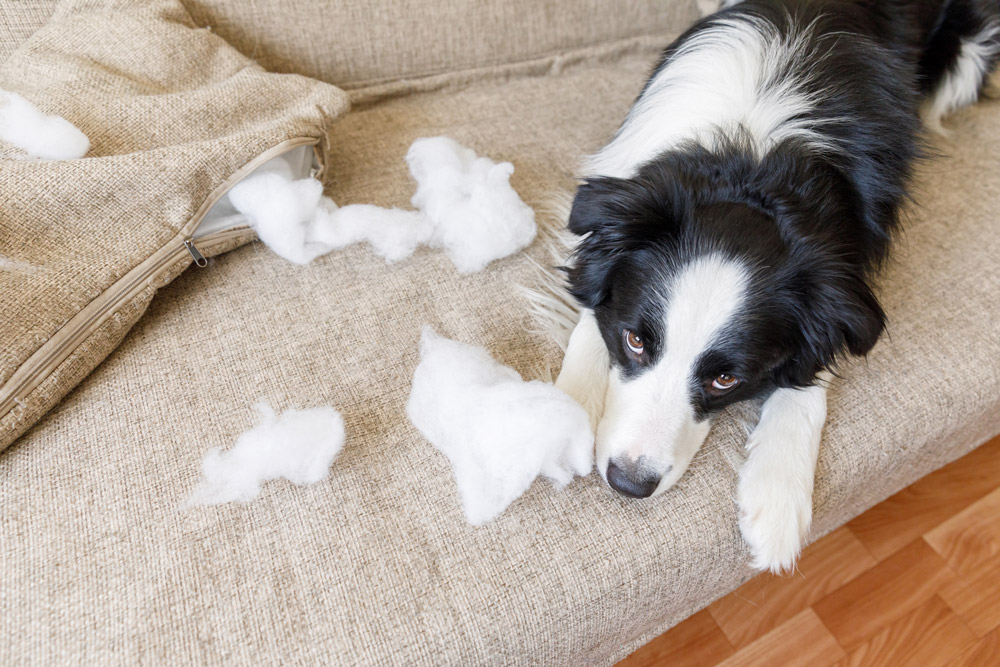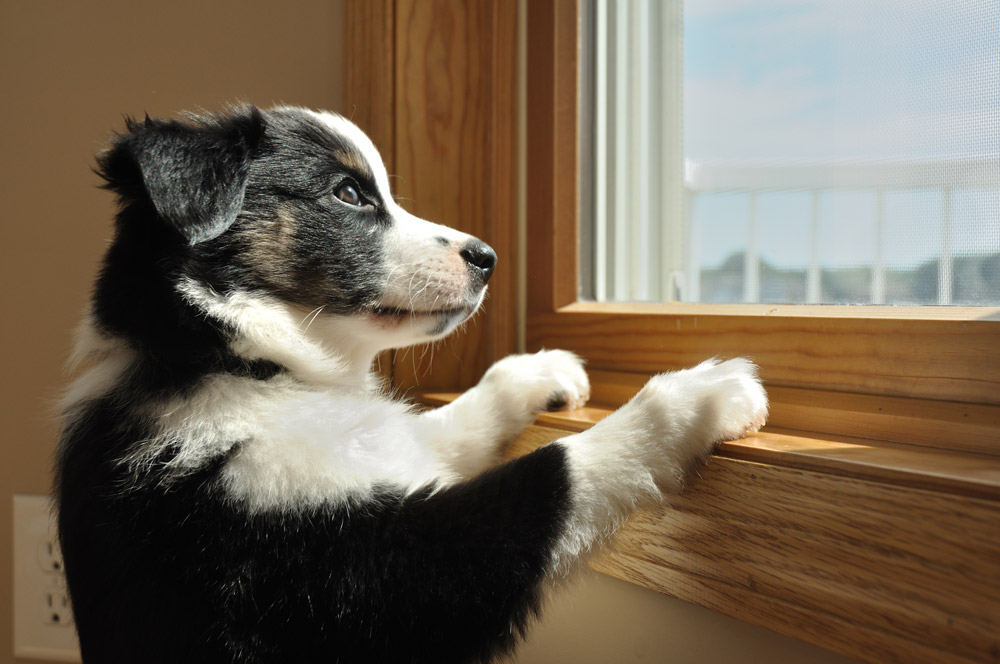Separation anxiety in dogs and puppies is common, but it’s a problem that we’ve seen more often after recent extended periods at home. Many people took this opportunity to bring a puppy into the family. The situation has been unique for many families and has allowed more time to help puppies settle in, and even older dogs have become used to us being at home more. But this has led to problems now things are becoming more ‘normal’, and we’re spending more time away from home.
What to look out for
Before you even leave your dog or puppy, there might be signs that separation anxiety is already a challenge for them. They might:
- Follow you around the house
- Be destructive if left in a room on their own
- Start soiling despite being house trained
- Whimper and whine if they can’t find you
- Show nervous behaviour such as excessive grooming, yawning, ears pinned back, tail between their legs, pacing, panting, and drooling.
When you do leave the house, they might:
- Bark and make noise for an extended period
- Become noise-sensitive and be easily agitated by noises that otherwise wouldn’t bother them
- Scratch at doors and remain by them until you return
- Display restless or destructive behaviour
- Lose their appetite

This sounds like us! What can I do?
It’s essential to the mental and physical wellbeing of your dog or puppy that they’re happy to be left alone sometimes. It also makes life much less stressful for you and your family, knowing that this is possible!
It might be that there is a medical reason for their behaviour aside from separation anxiety, so before starting on the training tips below, make an appointment with us to check that everything is ok. Before your appointment, make a note of any behaviour that concerns you and any patterns you notice. If it’s practical to do so and you think it describes things more clearly, by all means, make a video to show us.
Ok, we’ve got the all-clear. What do we do next?
It’s been an unexpected joy in difficult times to be able to spend so much time with our pets. They’ve enjoyed this routine, and it’s made them feel comfortable, so now we need to gradually (if possible) start creating a new routine that makes them feel just as secure. Dogs are like humans and like structure, so they can predict what’s going to happen next.
You can start your training by spending small amounts of time apart whilst still in the same house. You can then go further away, and for longer, so your puppy or dog starts to be reassured that the same things happen each time, and you always return.
Before you start…
- Find a space in the house that you can make theirs during the separation. This could be anything from a crate to a room and is their quiet, safe space where they have everything they need. A bed, water and toys will make sure they are comfortable.
- Encourage them to go and lie in their bed quietly. Reward calm behaviour when you spot them relaxing in their beds
- Before leaving them alone, take them for a walk. Exercise and running around outside is so important. It can physically tire them, but it also releases a ‘happiness protein’ called Brain-Derived Neurotrophic Factor that will help relax and calm them. It’s also important that they’ve been given an opportunity to go to the toilet.

Tips and tricks…
- Take a blanket to bed with you for a few nights or sleep in an old t-shirt that you can then leave with them when you go out. Your scent will be familiar and calming.
- Don’t make a fuss when you leave or when you come back; simply leave and return quietly. NEVER return to try and calm them down. Intuitively, this might feel like the right thing to do, but responding to their concern reinforces to them that there really is something to worry about
- Don’t make eye contact as you’re getting ready to leave. This will encourage your dog to follow you and encourage you to start a conversation. Remain as calm and relaxed as you can
- Leave a TV or radio on. This will work to block out noises that they might become over-sensitive to, but also feel like company
- If there are no dietary restrictions to doing so, investigate puzzle feeders and treat dispensers. There are a wide range to choose from, and hunting for delicious treats keeps anyone entertained! Chewing is also a great stress-reliever, so chucking a long-lasting chew at them as you leave can form a great part of your routine
- Consider trying nutraceuticals – these are naturally-derived products in the form of plug-ins, sprays and food supplements that mimic the comforting pheromones released by mother dogs for their pups to make them feel relaxed and reassured that everything’s ok
- Don’t punish them if they’ve destroyed something or toileted. This will make them even more anxious about it next time. Don’t go overboard with praise and fuss either. Just keep it all calm and act like going out for a while and coming back is no big deal. Dogs are very perceptive and will be picking up on anything you do that suggests this is a dramatic event.
Don’t forget….
All dogs are different. Various factors result in behaviour that looks like separation anxiety, including medical conditions, things that have happened to them in the past, simply being used to you being around, fear and anxiety, frustration and boredom.
Giving your puppy or dog confidence and reassurance can take time and isn’t an overnight fix. It’s a case of trying out a few different things until you find the recipe of tricks that works for you and your family.
Need further advice?
If you’d like to book an appointment for the issues discussed in this blog, please call us on 01980 621 999, and we’d be happy to help.